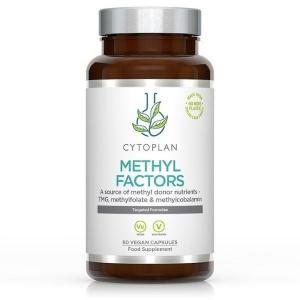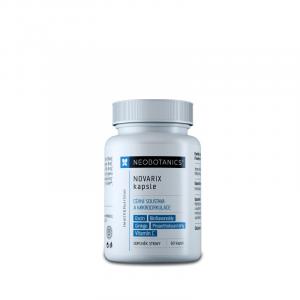
Purple Lips: Causes and How to Identify Them in Children and Adults

When Lips Turn Blue - What Can Purple Discoloration of Lips Mean?
Health often reflects on our appearance, and the same goes for our lips. Their color, shape, and texture can provide important information about the overall health of the body. When lips turn purple, it's not just a cosmetic issue. Purple lips can be a warning signal that something is wrong. In some cases, it might just be the cold or temporary reduced blood flow, but at other times, it could be a symptom of a more serious disease.
What Causes Purple or Blue Lips?
The color of lips is mainly determined by the presence of blood capillaries just below the thin mucosa. While healthy lips have a pinkish to red hue, a change in their color – to blue, purple, or bluish-gray – indicates a change in blood oxygenation or circulation problems. This phenomenon is medically known as cyanosis.
Purple lips often signal that something is wrong – it could be low oxygen levels, circulation issues, heart or lung problems. Sometimes, it might be caused by cold, poisoning (like carbon monoxide), certain medications or drugs, or a severe allergic reaction. Simply put, when lips turn blue-purple, the body is likely indicating something important.
In some cases, the cause might be completely harmless – for example, after prolonged exposure to cold weather outside. In others, it could be a signal of an acute health problem requiring immediate medical attention.
Purple Lips in Children and Adults - Differences That Cannot Be Overlooked
In young children, especially infants, purple discoloration of the lips can be an alarming symptom of breathing problems. For instance, during bronchitis, pneumonia, or congenital heart defects, blood oxygenation can decrease. If the child is also breathing rapidly, has retracted lungs upon inhalation, or is apathetic, immediate medical attention is necessary.
In adults, the situation can be more complex. In smokers or people with chronic obstructive pulmonary disease (COPD), purple lips are a common symptom of chronic oxygen deficiency. Heart failure, pulmonary embolism, or an asthma attack can also cause a sudden change in lip color. In some cases, it's a silent symptom that goes unnoticed until other symptoms appear – such as shortness of breath, fatigue, or chest pain.
An example is the case of Mrs. Jana from Brno, 58 years old, who started noticing her lips were slightly purple in the morning after waking up. At first, she didn't pay attention, but after a few weeks, she experienced shortness of breath while walking up stairs. Medical examinations eventually revealed mild pulmonary hypertension – a condition that, if not detected in time, can lead to serious complications.
When to Seek Help and What to Watch For?
Sure, sometimes a little bit of purple lip discoloration can be completely harmless, like when you've been outside in the cold for a long time or are returning from a lengthy mountain hike. But if these purple lips persist for a long time, keep returning, or are accompanied by other health issues, it really warrants attention. The body often indicates something is going on this way – and sometimes, when we don't listen, it can be matters that aren't just minor observations.
For example, if you start feeling shortness of breath, even during relatively easy activities like walking up stairs, or you experience unusual fatigue, weakness, or dizziness – these are signals that shouldn't be ignored. When combined with pressure or chest pain, or if you notice your heart racing for no apparent reason – it's definitely better to get examined by a doctor than to ignore it.
Similarly, if you notice color changes in other parts of the body – like fingers, nail beds, or tongue, you should be alert. It's not about panicking right away, but neither should you pretend nothing is happening. The body is saying something – so listen to it.
In some cases, a blood gas analysis may be necessary to assess blood oxygenation, a chest X-ray, an ECG, or an echocardiogram. Diagnosis is crucial because without knowing the cause, it's impossible to choose the right treatment.
Are There Natural Causes?
Yes, purple lips don't always signal illness. For example, prolonged exposure to a cold environment causes blood vessels to constrict, which can lead to temporary bluish discoloration of lips and fingers. This condition quickly resolves after warming up. In some people, blood oxygenation temporarily decreases during sleep, which can lead to mild lip discoloration – especially if they sleep in a too cold room or suffer from sleep apnea.
Athletes or people with high physical exertion may experience temporary cyanosis due to an imbalance between oxygen intake and consumption. However, this phenomenon should not occur regularly – if it does, one should get examined.
Also, certain medications or dietary supplements can change lip color, especially if they affect the circulatory or respiratory system. Rarely, it can be a reaction to chemical substances, for example, exposure to industrial toxins or strong cleaning agents.
How to Support a Healthy Appearance of Lips?
Healthy lips are not just a matter of aesthetics – their appearance can be a reflection of the body's overall balance. If you want to avoid unexpected color changes, focus on the following:
- Adequate hydration – dehydration can lead to loss of elasticity and lip pallor
- A diverse diet rich in iron, vitamin B12, and folic acid – a lack of these nutrients can lead to pale or bluish lips
- Regular exercise – supports circulation and tissue oxygenation
- Avoiding smoking – cigarette smoke weakens the vascular system and blood oxygenation
- Natural balms and protection against cold – especially in winter months
In the words of doctor and nutrition expert MUDr. Kateřina Cajthamlová: “The color of lips is one of the fastest indicators of the state of blood circulation. If it changes without a clear reason, the body is indicating that it needs help."
Try our natural products
Purple Lips and a Healthy Lifestyle
A healthy lifestyle is not just a trend but a fundamental prevention of many diseases – including those that can cause cyanosis. Adequate exercise, quality sleep, nutrition rich in antioxidants, and stress reduction – all these strengthen the circulatory system and help maintain natural tissue circulation. These factors can play a role in whether purple lips become just a short-term phenomenon or the first symptom of a more serious disorder.
In today's fast-paced world, it's easy to overlook the body's subtle signals. But these inconspicuous changes – like the shade of our lips – can be a valuable indicator that it's time to slow down and focus on our health. Lips may not speak, but through their appearance, they often reveal more than we realize.







